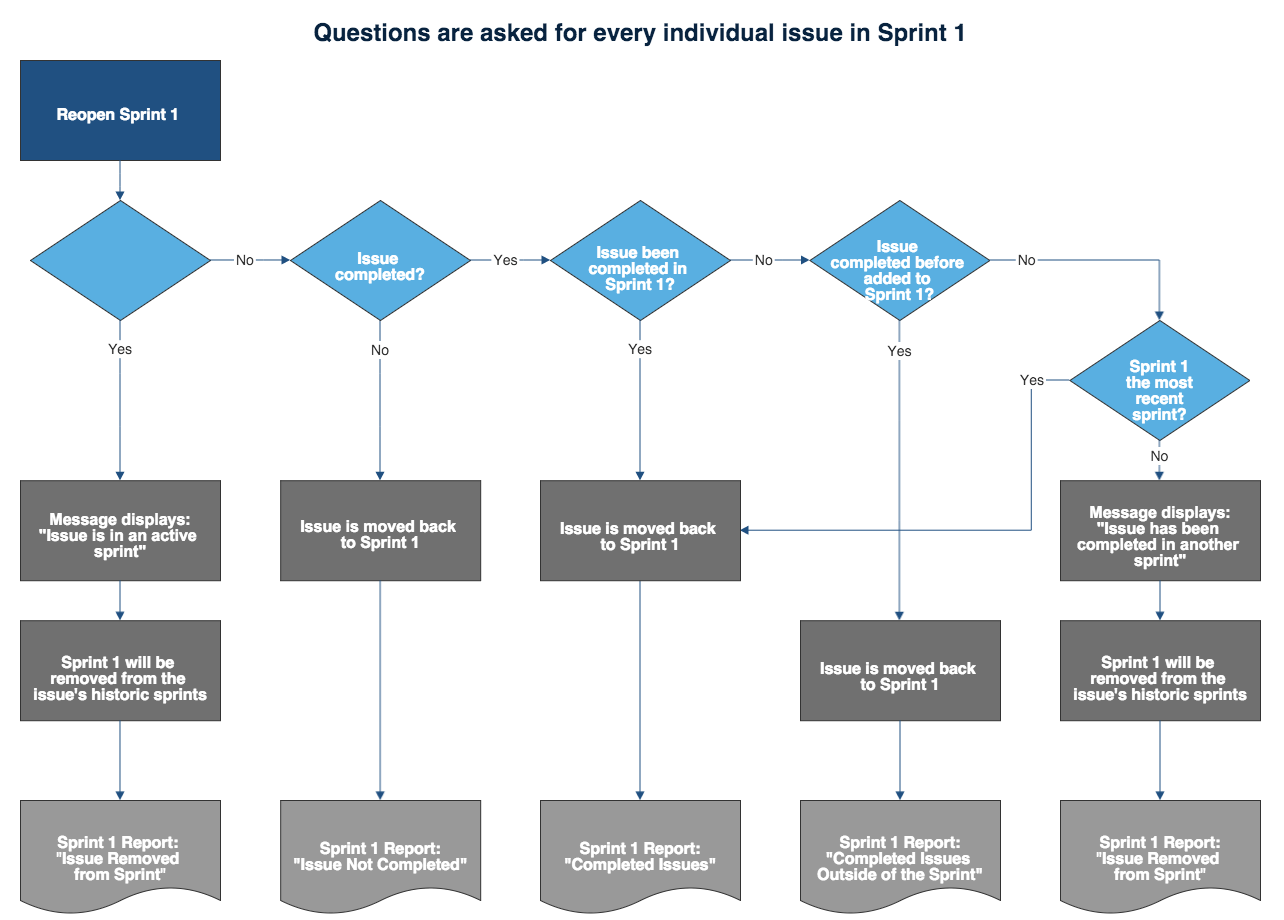Reopening a sprint
Jira Software lets you reopen sprints that have been previously closed. This is a handy feature when:
- You've mistakenly completed the wrong sprint.
- You completed the correct sprint, but you completed it too early.
Moreover, sprints that are mistakenly closed or closed too early will affect your team's velocity, as the data in these sprints will still be included in your board. Your Velocity Chart will then be reflecting inaccurate data.
Consider that sprints only apply to Scrum boards.
General points when reopening sprints
To reopen a sprint, you must be logged in as a user with the Jira administrator permissions or a user with the manage sprints permission. For details, see Permissions overview.
In general, it's worthy to keep these points in mind when you're trying to reopen a sprint:
- When the Parallel Sprints feature is not enabled and there is a currently active sprint, you cannot reopen the sprint you previously completed.
- When issues in the completed sprint have already been moved to other active sprints, you can still reopen the sprint, but it will not contain the issues that are already in the active sprints.
- For issues that are completed outside of a sprint, but are then pulled back into a sprint you just reopened, the Sprint Report for the opened sprint will show these issues as "completed outside of this sprint".
Closed and completed sprints get automatically removed from the Sprint issue field when you’re moving issues to a new project. Learn more about the issue in the Knowledge Base article
Reopening a sprint
- Navigate to your desired board.
- Select Reports, and then select Sprint Report.
- Select the relevant sprint from the sprint drop-down.
- Select Reopen Sprint. The Reopen Sprint dialog will be displayed, showing you the outcome you can expect when the sprint is reopened.
- Select Reopen.
Note the following details that take place when a sprint is completed then reopened:
- When you complete a sprint, this event of completing the sprint will be recorded in the corresponding Sprint Report.
- When you reopen that sprint, this event of reopening the sprint will also be recorded in the Sprint Report. However, the report will now use the new end date moving forward.
- When the reopened sprint is completed, the last completion date will appear as the end date in the Sprint Report.
Need help? If you can't find the answer you're looking for in our documentation, we have other resources available to help you. Check out Getting help.
